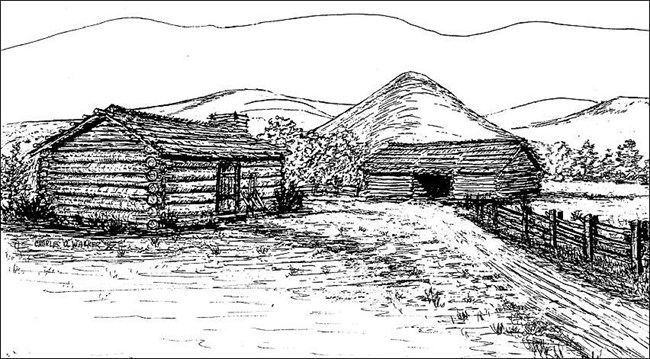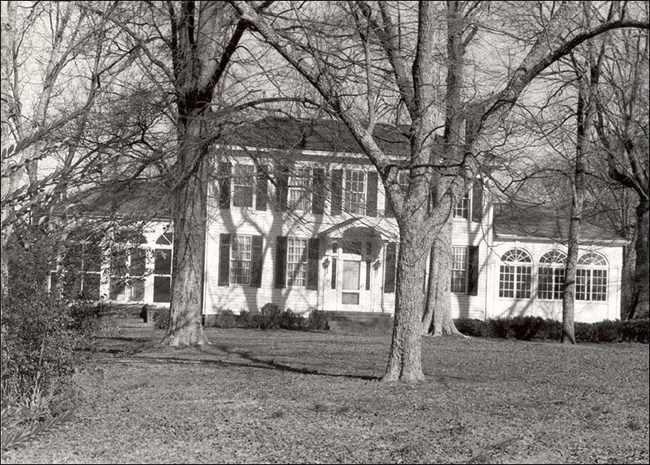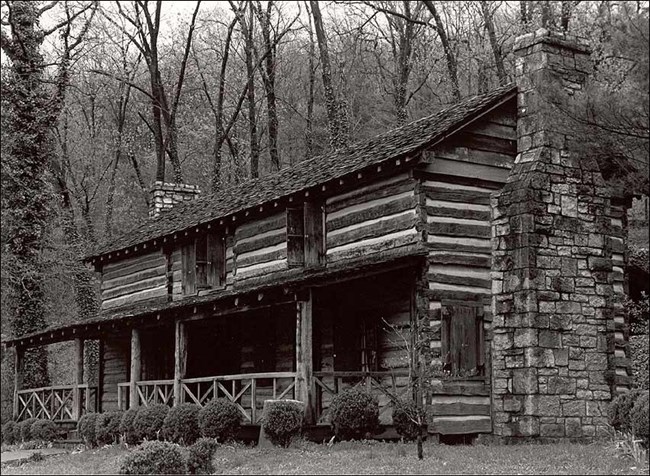Last updated: September 7, 2021
Article
The Cherokee Nation in the 1820s

Courtesy of Charles O. Walker, artist
Cherokee culture thrived for thousands of years in the southeastern United States before European contact. When the Europeans settlers arrived, the Indians they encountered, including the Cherokee, assisted them with food and supplies. The Cherokees taught the early settlers how to hunt, fish, and farm in their new environment. They introduced them to crops such as corn, squash, and potatoes; and taught them how to use herbal medicines for illnesses.
By the 1820s, many Cherokees had adopted some of the cultural patterns of the white settlers as well. The settlers introduced new crops and farming techniques. Some Cherokee farms grew into small plantations, worked by African slaves. Cherokees built gristmills, sawmills, and blacksmith shops. They encouraged missionaries to set up schools to educate their children in the English language. They used a syllabary (characters representing syllables) developed by Sequoyah (a Cherokee) to encourage literacy as well. In the midst of the many changes that followed contact with the Europeans, the Cherokee worked to retain their cultural identity operating "on a basis of harmony, consensus, and community with a distaste for hierarchy and individual power." (Meining)
In 1822, the treasurer of the American Board of Commissioners for Foreign Missions reported on some of the changes that had been made: (Ehle)
"It used to be said, a few years since, with the greatest of confidence, and is sometimes repeated even now, that 'Indians can never acquire the habit of labour.' Facts abundantly disprove this opinion. Some Indians not only provide an abundant supply of food for their families, by the labour of their own hands, but have a surplus of several hundred bushels of corn, with which they procure clothing, furniture, and foreign articles of luxury."

National Park Service
Two leaders played central roles in the destiny of the Cherokee. Both had fought along side General Andrew Jackson in a war against a faction of the Creek Nation which became known as the Creek War (1813-1814). Both had used what they learned from the whites to become slave holders and rich men. Both were descended from Anglo-Americans who moved into Indian territory to trade and ended up marrying Indian women and having families. Both were fiercely committed to the welfare of the Cherokee people.
Major Ridge and John Ross shared a vision of a strong Cherokee Nation that could maintain its separate culture and still coexist with its white neighbors. In 1825, they worked together to create a new national capitol for their tribe, at New Echota in Georgia. In 1827, they proposed a written constitution that would put the tribe on an equal footing with the whites in terms of self government. The constitution, which was adopted by the Cherokee National Council, was modeled on that of the United States. Both men were powerful speakers and well able to articulate their opposition to the constant pressure from settlers and the federal government to relocate to the west. Ridge had first made a name for himself opposing a Cherokee proposal for removal in 1807. (Ridge would later support the removal of Cherokee from their land. This caused a split between Ridge and Ross, along with many in the Cherokee Nation.)
In 1824 John Ross, on a delegation to Washington, D.C. wrote: (Moulton)
"We appeal to the magnanimity of the American Congress for justice, and the protection of the rights, liberties, and lives, of the Cherokee people. We claim it from the United States, by the strongest obligations, which imposes it upon them by treaties; and we expect it from them under that memorable declaration, 'that all men are created equal.'"

National Park Service
Not all tribal elders or tribal members approved of the ways in which many in the tribe had adopted white cultural practices and they sought refuge from white interference by moving into what is now northwestern Arkansas. In the 1820s, the numbers of Cherokees moving to Arkansas territory increased. Others spoke out on the dangers of Cherokee participation in Christian churches, and schools, and predicted an end to traditional practices. They believed that these accommodations to white culture would weaken the tribe's hold on the land.
Even as Major Ridge and John Ross were planning for the future of New Echota and an educated, well-governed tribe, the state of Georgia increased its pressure on the federal government to release Cherokee lands for white settlement. Some settlers did not wait for approval. They simply moved in and began surveying and claiming territory for themselves.
A popular song in Georgia at the time included this refrain: (Carter)
"All I ask in this creation
Is a pretty little wife and a big plantation
Way up yonder in the Cherokee Nation."
